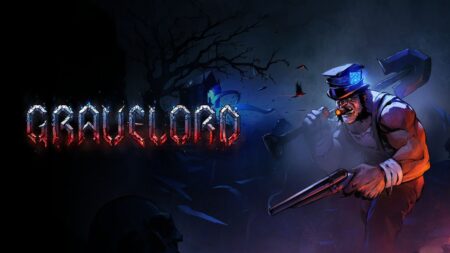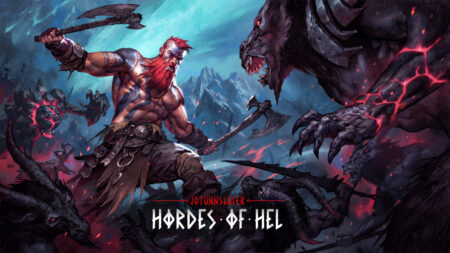It is difficult, when playing Killing Time: Resurrected, to pinpoint the exact moment when the metaphorical gaming wagon jumps off the rails and this remaster of a cult classic first person shooter from the 1990’s becomes deliciously chaotic. But it is certainly that same chaos that makes it surprisingly playable and fun, even 30 years after it came out.
Originally developped for the ill-fated 3DO console, then ported on PC, and « revived » by Ziggurat Interactive and Nightdive Studios, Killing Time is based on a simple principle: collect the keys, then collect the items, then kill the final boss.
That being said, if the gaming mechanics have mostly stayed the same, since even before the « official » birth of the genre, the interest in a title like Killing Time reside in its story, for sure, but mostly in its quirkiness. First, then, the story: a young woman named Tess, made rich at the death of her parents, has started collecting egyptian antiquities, and decided to slow the flow of time, even trying to become eternal. In order to do it, she had her soul split in different « vessels » that are distributed around her estate. Then, she activated what is described as a special water clock; replace the liquid with blood, add a few incantations, and you can control the flow of time.
The problem is that the procedure went horribly wrong: almost everyone on the island was transformed in a monster or some kind of horrific creature. In order to restore the naturel order of things, the player will need to collect all vessels and reach Tess’ bedroom, and beyond.
As mentioned before, the idea is fairly simple: walk around the (fairly large) estate, explore rooms, caves, dungeons and other strange buildings; collect keys that will give you access to more rooms and vessels; rinse and repeat.

Good times… and bad
There are some very, very interesting things in that game that first came out in 1996; first of all, if Doom and other similar titles liked to depict military bases, dungeons and other fantastical or extraterrestrial environments, Killing Time went completely in the other direction. Yes, there are times where you will walk into caves that wouldn’t be out of place in Hexen, or Doom.
But from the start of the game, everything feels… real. You arrive on the estate’s island by boat? You will begin in the docks, then make your way up to the manor, after walking through the gardens. You need to get to the lighthouse? Then you will have to walk along the coastline, up until, well… the lighthouse. No disconnected demon lairs, no extremely weird architecture (for the most part); the world of Killing Time looks like a fairly believable place.
Of course, there are some peculiar aspects to the halls and corridors of the estate, which can sometimes be as wide as they are cramped. After exploring a pretty vast crypt, for example, it is not rare to have to navigate our way in tightly constructed staircases, where there is no place for maneuvering.
Even with the help of an overmap, it is also easy to get lost, especially since there doesn’t seem to be a zoom feature on said map. So you have your exact position on the map, and also the possibility of seeing the entire estate, but it is impossible to really use both views at the same time. And since the player will be doing a lot of back and forth, it can quickly become frustrating.
Luckily, the game does not seem to force the player to find a secret passage, or something similar, in order to progress. There are, however, a lot of instances where it will be obligatory to clear room after room after room full of monsters, in order to activate a series of switches ultimately unlocking a door or the next part of the path.
It is also impossible to review Killing Time and not talk about the enemies. Because it is possible to justify the presence of zombies, be it gangsters, gardeners… even weird chefs and cooks that throw knives at the player.
It is a little bit more complicated to understand why the maids, when hit or dying, will be accompanied by the sound of a flushing toilet. Or why there are large floating heads roaming about. Or why another type of maids are now winged horrors. Or why there are so many clowns. Clowns that make a squeaking sound, of course.
A somewhat too sane player could be tempted to discredit this game for being to quirky, or the original developers for being lazy and just throwing everything they can at the wall to see what sticks.
On the top of that, we could add the music; even if it is usually well thought out and helps creating an interesting atmosphere, it sometimes goes completely crazy. One second, you are surrounded by mystery along a winding path in the woods; the next, it is the same path, but you are now listening to polka. What is going on?
But the crazy enemies, the weird (but realistic) level design, the freaky music, the cheesy full-motion video cutscenes… everything combines into a fascinating game that benefits greatly from this remaster. Oh, Killing Time: Resurrected is not perfect by any means, but it is indeed a cult classic that deserves to be played.






